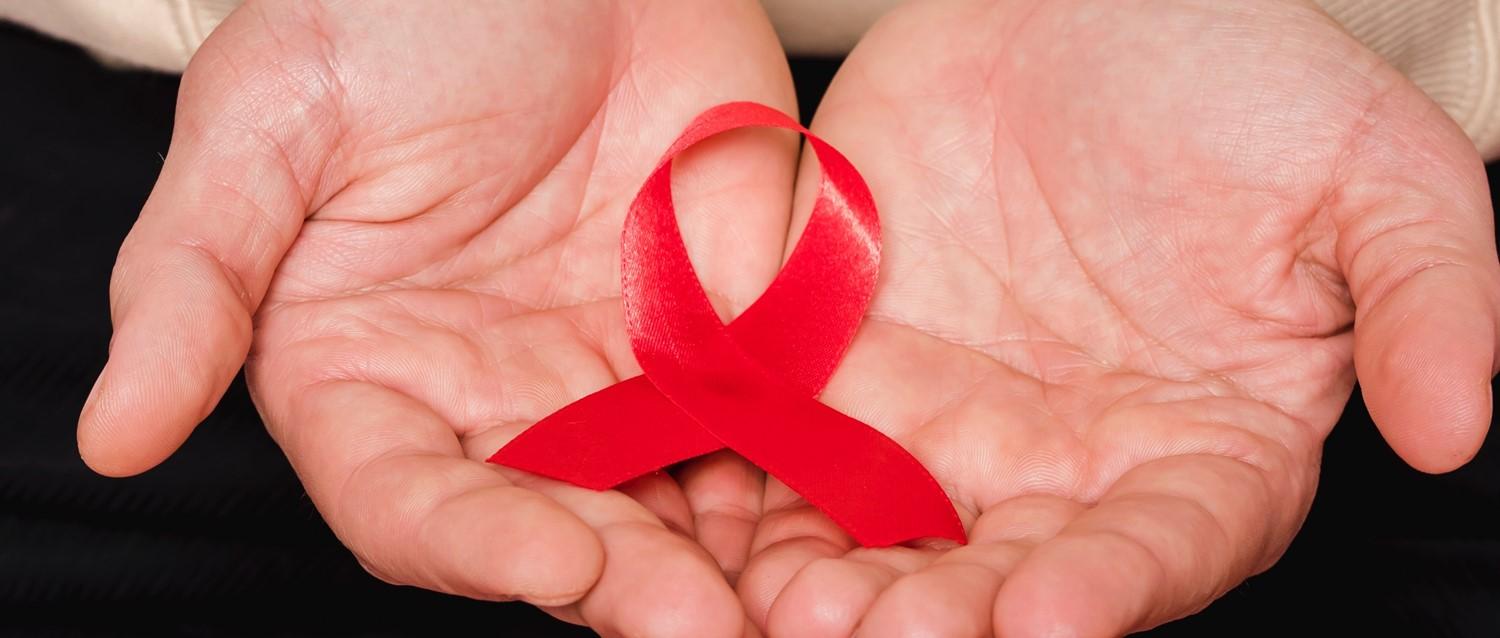
Dispelling common myths about HIV and AIDS
Peer reviewed by Dr Sarah Jarvis MBE, FRCGPLast updated by Lawrence HigginsLast updated 1 Dec 2022
Meets Patient’s editorial guidelines
- DownloadDownload
- Share
- Language
- Discussion
Despite the progress that has been made in managing HIV, on this World AIDS day 2022, there are still pervasive misconceptions surrounding the virus and AIDS. It's really important that these harmful ideas be dismantled to encourage people to get tested and to ensure those who are HIV-positive can access quality care.
In this article:
Continue reading below
An overview of HIV and AIDS
HIV stands for 'human immunodeficiency virus' and is a virus that attacks the body's immune system, making it harder to fight off infections and disease. HIV is passed on through bodily fluids, including blood, semen and vaginal fluid, meaning it is most commonly transmitted via unprotected sex. HIV can also be transmitted through blood transfusions, through the sharing of needles, and between mother and infant during pregnancy, childbirth and breastfeeding.
AIDS stands for 'acquired immunodeficiency syndrome' and it develops when HIV is left untreated. AIDS is the collection of symptoms and infections associated with HIV that occurs when the body's immune system is badly damaged because of the virus.
Matteo Cassolato, lead for HIV prevention at Frontline AIDS, explains that, while there is currently no cure or vaccine for HIV, modern antiretroviral treatments mean that people with the virus can live long and healthy lives. When taken regularly, these treatments can also prevent the transmission of HIV to sexual partners.
He says it's estimated that for at least half of people who contract HIV, their early symptoms are much like that of flu. This is a sign that the body is trying to fight off the infection. Commonly, symptoms include a sore throat, raised temperature and rash on the body. Additionally, they can include tiredness, muscle and joint pain and swollen glands.
"Whilst initial symptoms may go away after several weeks, the virus continues to be active and cause damage to the immune system. The individual may not experience any more symptoms for many years, but once the immune system is at a stage where it is in decline, they can experience increasing issues such as weight loss, diarrhoea, night sweats, skin problems, or recurring infections," says Cassolato.
In the UK, there are four key methods of testing for HIV:
Point of care tests.
Home sampling kits.
Home testing kits.
Some provide same-day results while others take a few days.
What are common misconceptions around HIV and AIDS?
The ways HIV is transmitted
"There are still misconceptions about how HIV can be transmitted, with some people incorrectly believing the virus can be passed from person to person via saliva, sweat or breathing in the same air," says Cassolato.
"A similar myth is that insects, particularly mosquitoes, can transmit HIV through their bites. However, this too is false: HIV is a fragile virus that becomes inactive very quickly after leaving the body."
HIV also cannot be transmitted via:
Water.
Sharing food or utensils.
Touching someone who has HIV.
Kissing.
Tears.
Urine.
Used condoms.
Sharing towels.
Door handles.
New or sterilised needles.
HIV always leads to AIDS
While there is no absolute cure for HIV, it can be managed with medication nowadays, preventing it from ever developing into AIDS. Those who are HIV-positive can greatly reduce, or even eradicate, their chances of spreading the virus.
Those who think they've been exposed to HIV can take post-exposure prophylaxis (PEP) medicine within 72 hours of coming into contact with the virus to reduce their chance of becoming infected.
Those with a sexual partner who is (or may be) HIV-positive can take PrEP, which stands for pre-exposure prophylaxis. This combination of two drugs protects against HIV.
Those who test positive for HIV are closely monitored with regular blood tests before starting the treatment process.
Only certain groups of people can get HIV
HIV doesn't discriminate and anyone can get it. However, certain people are more vulnerable. Those who have sex without condoms or who share needles are most at risk.
While not everyone has the same level of risk to getting HIV, everyone can reduce their risk of becoming infected.
It's easy to tell if someone has HIV
While there are visible symptoms of HIV, the virus will present differently in each person. Therefore, it is not always possible to tell that someone is infected, which is why getting tested is so important. Some may not experience symptoms at all. You also cannot tell if someone has HIV just by looking at them. Those taking effective treatment are likely to appear just as healthy as any other person without HIV.
AIDS is no longer an issue in the 21st century
There have been significant improvements in testing and treatment for HIV. This means that, in large parts of the world, someone who contracts the virus today can have a lifespan no different to someone without HIV. However, Cassolato explains that millions of people in low-income and middle-income countries lack access to HIV treatment. This places their health, and in some cases their lives, at risk. In 2020 alone, of the 37.7 million people globally living with HIV, 680,000 people died from AIDS-related illnesses.
Continue reading below
Where do these misconceptions come from?
Many of the misconceptions surrounding HIV and AIDS were very prominent and believed to be fact back in the early days. However, decades later, they continue to drive HIV-related stigma and discrimination all over the world. Cassolato suggests the reason they remain so widely believed is partly down to uneven access to quality education on sex and relationships. From a young age, children believe it is normal to 'other' those with HIV. By not being taught the facts about HIV, the belief remains that it doesn’t affect 'people like me'.
"The reality is that HIV continues to affect people and communities worldwide, as it has done for 40 years. Ensuring access to clear, accurate information about the virus, along with tackling myths and misinformation, is a vital part of HIV prevention worldwide," stresses Cassolato.
How are these misconceptions harmful?
"All over the world, misconceptions persist around HIV and AIDS, increasing stigma and setting back efforts to prevent HIV and support people living with the virus. As a result, people around the world continue to contract HIV every day. In 2020, there were 1.5 million new HIV infections," says Cassolato.
"Whilst we've made a lot of progress, HIV is spiking again among the most marginalised people. It is not a coincidence that HIV and AIDS disproportionately affect communities that are criminalised and marginalised, who often have the least power. This can increase their risk of contracting HIV and make them less likely to access effective testing, treatment and care if they do."
By continuing to perpetuate myths around HIV and AIDS, it means people are less likely to get tested. So long as there is shame surrounding being HIV-positive, people will fear getting that diagnosis and do anything to avoid it. But by not getting tested, people who are HIV-positive and don't know it, risk developing AIDS when left untreated. This can cause serious health complications and lead to death.
Continue reading below
What can we do to dismantle these ideas?
"It's vital that we break down the social, political and legal barriers that continue to stand in the way of a future free from AIDS. This means collaborating with everyone from grassroots community groups to national governments. No single group or organisation can end AIDS alone - we need to have open conversations," says Cassolato.
He encourages people to read up on the reality of HIV and AIDS to understand how life has changed, rather than assuming the virus still looks as it did in the 1980s.
A final message ...
"I want people to know that in rich countries, like the UK, an HIV diagnosis no longer means what it did 40 years ago. Transformative progress on treatment means that people living with HIV can live long, happy and healthy lives.
"A person living with HIV can even expect a similar life expectancy to the general population, providing they are diagnosed in good time and can access effective HIV treatment," says Cassolato.
He says that while millions worldwide are already benefiting from effective treatments, millions aren’t.
"Every person living with HIV worldwide deserves access to high-quality treatment and care, to keep them well and ultimately to help end the epidemic for good. Everyone deserves that chance, no matter where in the world they live."
Patient picks for HIV and AIDS

Sexual health
Why is PrEP still not available on the NHS in England?
Effective treatment combined with effective prevention techniques have reduced the number of new HIV diagnoses. So why isn't the NHS making medication which can prevent HIV (PrEP) available to everyone at risk?
by Milly Evans

Sexual health
Can you live a long, healthy life with HIV?
An HIV diagnosis was once renowned as a death sentence. However, advances in scientific research and medicine mean it is now possible to manage HIV on a daily basis without passing it on to others. In fact, it was only in 2019 when the oldest known person with HIV died. Miguel - known as The Lisbon Patient - was a Portuguese man who was diagnosed with HIV at the age of 84. He lived to the age of 100.
by Emily Jane Bashforth
Continue reading below
Article history
The information on this page is peer reviewed by qualified clinicians.
1 Dec 2022 | Latest version
30 Nov 2021 | Originally published
Authored by:
Emily Jane Bashforth

Ask, share, connect.
Browse discussions, ask questions, and share experiences across hundreds of health topics.

Feeling unwell?
Assess your symptoms online for free
Sign up to the Patient newsletter
Your weekly dose of clear, trustworthy health advice - written to help you feel informed, confident and in control.
By subscribing you accept our Privacy Policy. You can unsubscribe at any time. We never sell your data.